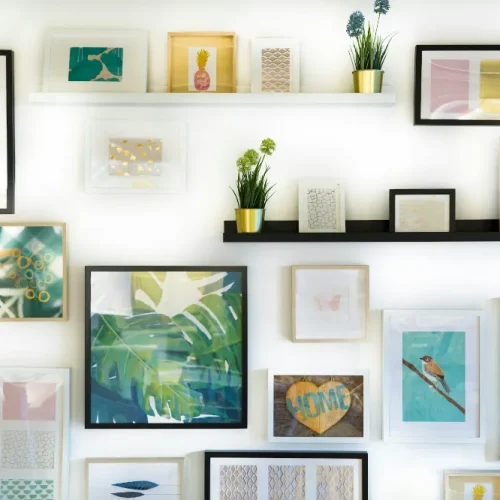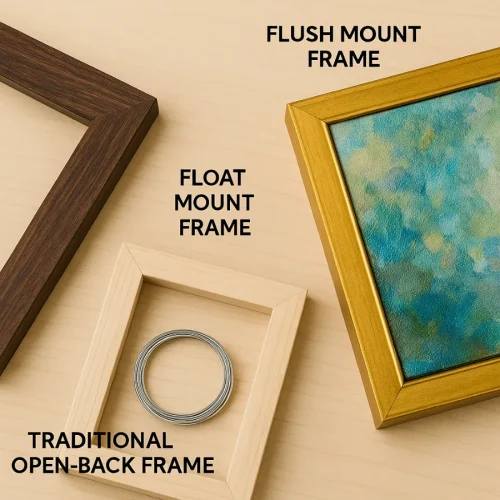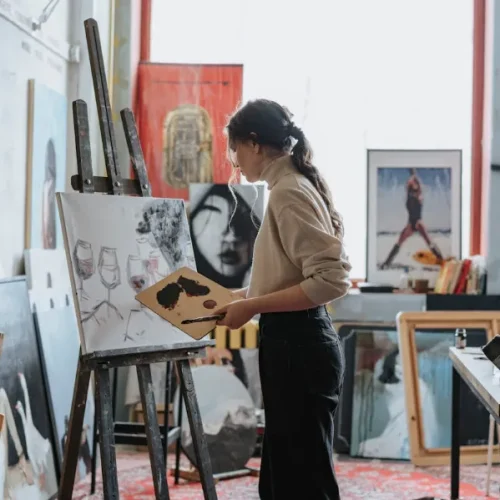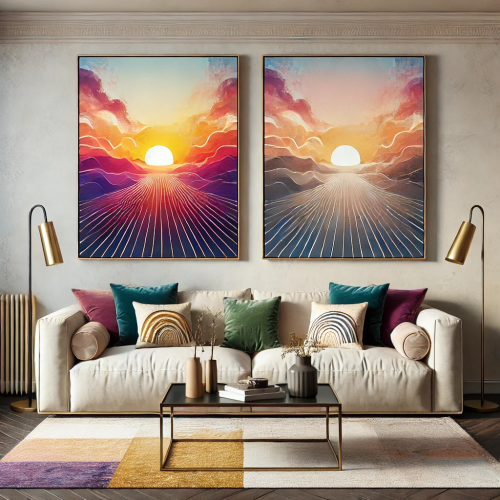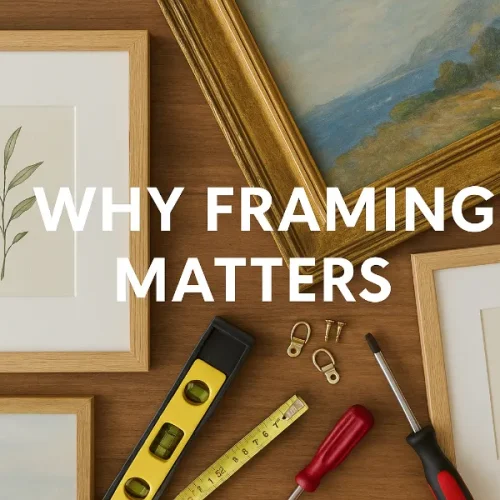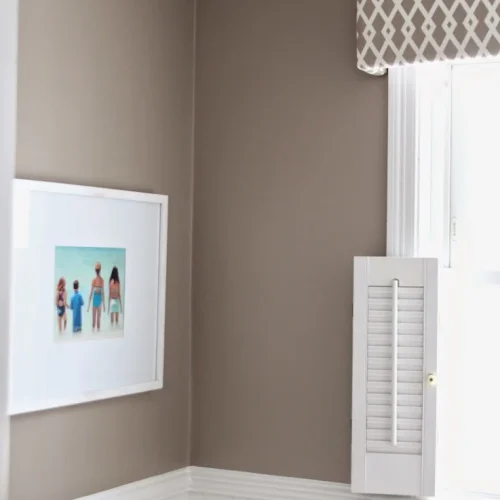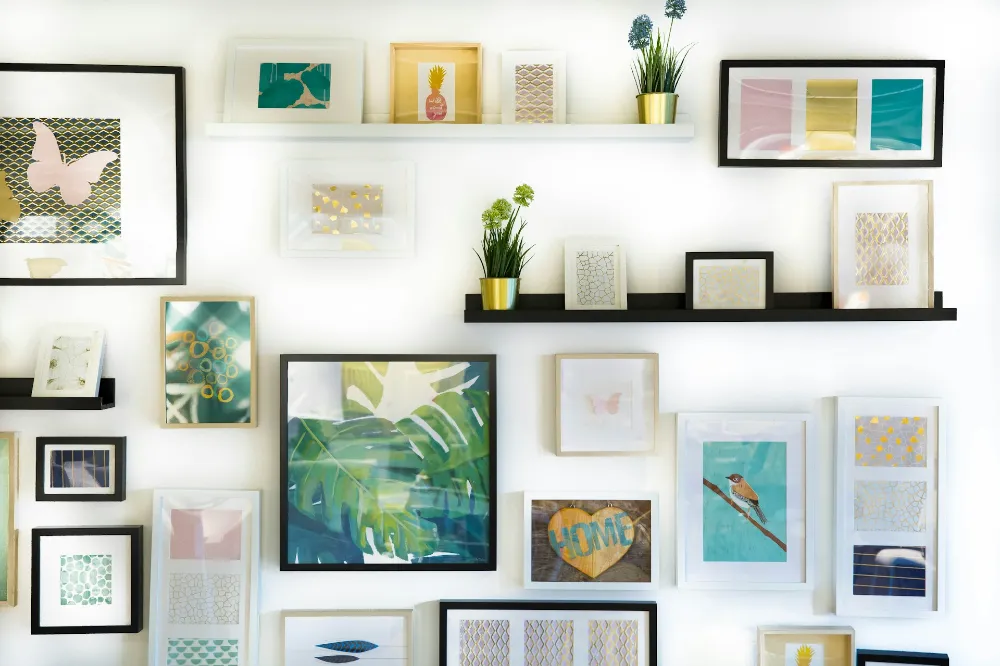
Have you ever stood before a blank wall and wondered if it was screaming for attention or simply breathing in tranquility? That’s the whole dilemma. Wall decor is a bit like a conversation: some walls need to express themselves loudly, to carry a piece that pops, that says something about you. Others, however, prefer to stay quiet and let the rest of the room do the talking.
The risk is trying to say everything at once and ending up with a visual cacophony where nothing has any impact. The art of decorating is precisely about knowing when to speak and when to listen. This guide isn’t a list of strict rules, but rather an invitation to find your home’s rhythm. Together, we’ll learn to play with fullness and emptiness, to make your walls accomplices to your personal style, and to create a harmony that isn’t just beautiful, but truly alive.
Should You Put Art on Every Wall?
Visual balance begins with an honest assessment of the room’s scale and function. Successful wall decor respects the unique needs of each space. Indeed, overloading every surface risks creating visual fatigue and causing your decor to lose its center of gravity. The decision to cover the walls or leave them bare is a personal choice, driven by the ambiance you wish to create. More and more people are turning to bold pieces to assert their style, which explains the great popularity of street art. You can find stunning pieces by visiting Shop Graffiti Wall Art. The most successful designs blend wall decor with empty spaces, ensuring the decor supports the furniture without competing with it.
Adapting Decor to Room Size and Function
The size and function of the room are your primary guides. In a small living room, excessive decoration can make it feel even smaller. In large spaces, art can be deployed to create a gallery experience or a cinematic focal point. The goal is to maintain a balance that enhances the room’s flow. Think of your wall as a stage: the artwork is the dialogue, and the furniture is the audience. Select one or two walls for a strong piece and keep the others more subdued to preserve harmony.
Graffiti Art as a Centerpiece
When a room calls for a powerful statement, graffiti art offers a dramatic accent charged with contemporary energy. The bold lines, vibrant colors, and urban texture anchor a space with personality. To avoid visual overload, pair a large graffiti canvas with more discreet pieces on other walls. The focal point should remain unique.
The Power of Blank Walls for Visual Rest
Blank walls are not an oversight; they are deliberate pauses that frame the rest of your decor. This negative space guides the eye, highlights central artworks, and provides visual relief. In our overstimulated world, these walls offer a silent counterpoint that enhances the overall effect of your decoration.
Proportion and Placement: Optimizing Your Art Display
Proportion is the silent conductor of your room. Proper placement and scale ensure that your wall decor complements the architecture and furniture. Large walls call for bold works, while shorter walls benefit from smaller series or a single discreet piece. The secret is to respect the wall’s proportion so the art integrates naturally.
Establishing a Focal Point: Where to Place Your Most Impactful Works
Identifying the main focal point is key. In a living room, the wall behind the sofa is often the ideal spot. In a bedroom, the wall behind the bed becomes a natural stage for a masterpiece. A strong focal point reduces visual noise and helps navigate the space. Reserve your most captivating works for one or two main walls and remain more understated elsewhere to balance the gallery effect.
Coordinating Wall Art with Furniture and Colors
Your walls do not exist in a vacuum. They interact with furniture, color, and light. Wall decor that respects scale and rhythm can lighten or weigh down a space. A coherent color palette creates a unified atmosphere, while pops of color can energize specific areas. Lighting also plays a decisive role, revealing the texture and shape of your artworks at different times of the day.
The Personal Touch: When Wall Art Reflects Your Lifestyle
Every home has its own rhythm. Adapting your wall decor to this rhythm means listening to the language of your interior. If your lifestyle is energetic, bold decor can reflect this vitality. For a more contemplative space, a subdued scheme will create an atmosphere of quiet sophistication. Your art should speak about you, and the space should respond with warmth and harmony.



